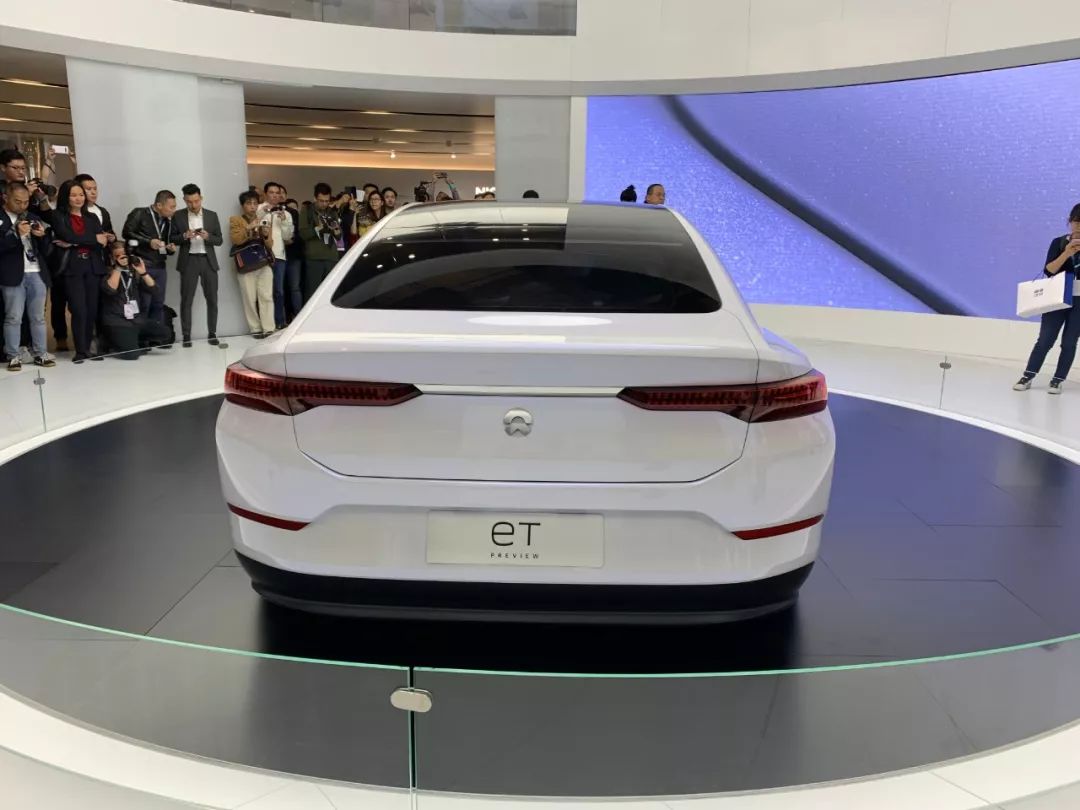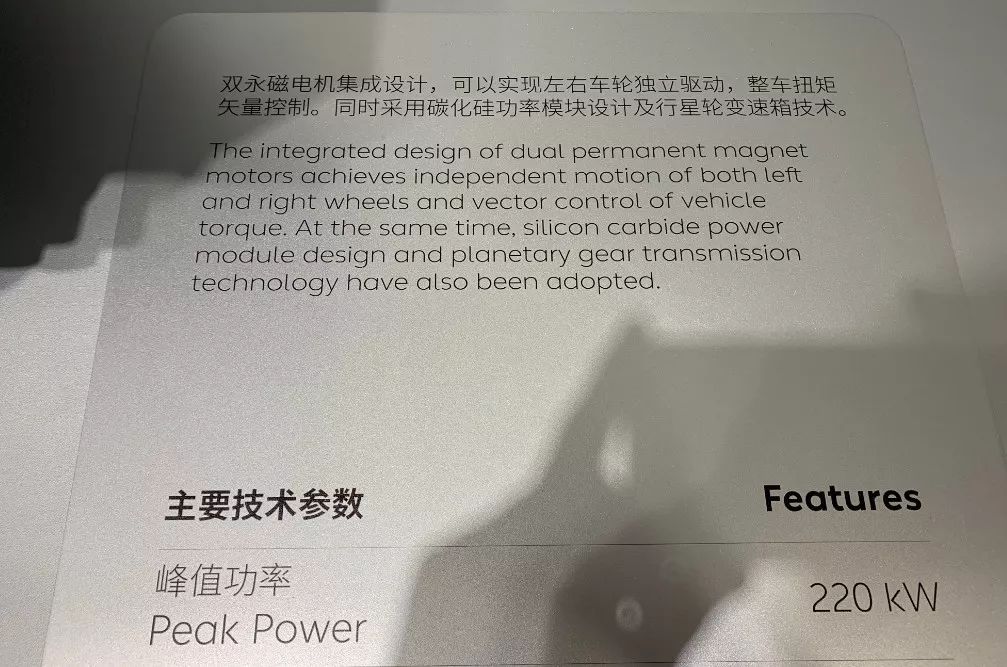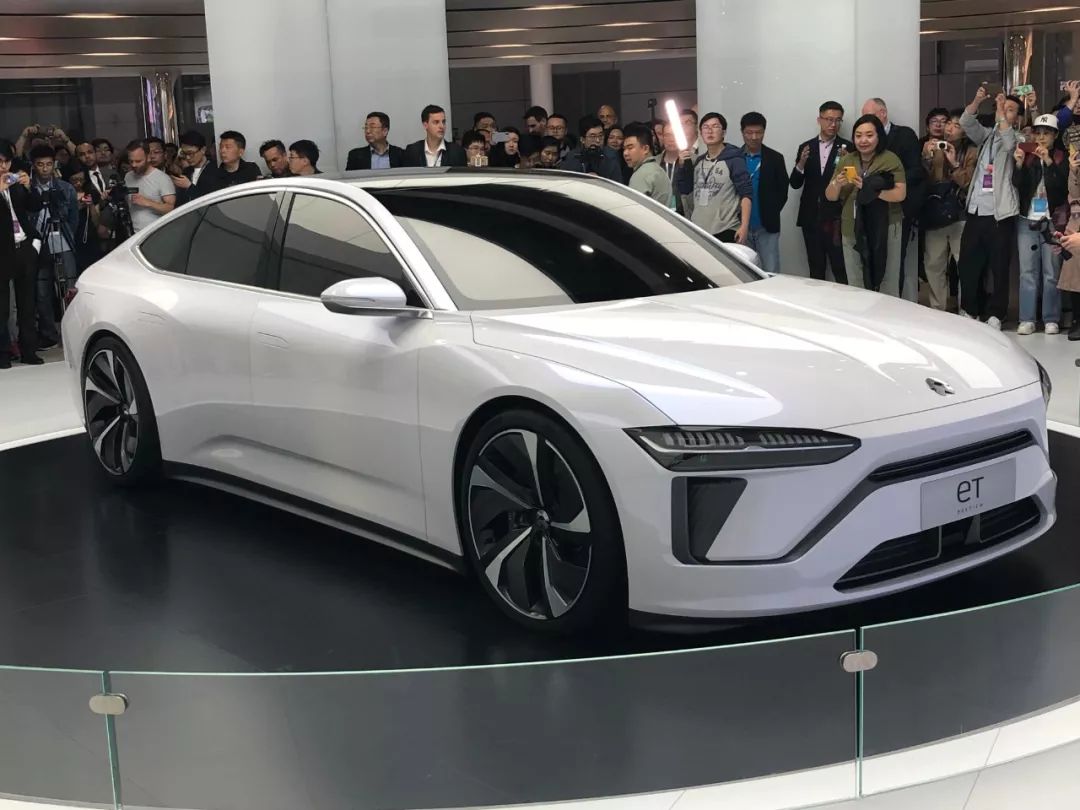Shanghai Auto Show, NIO’s Stage
The first mass-produced SUV ES8 made its debut at the 17th Shanghai Auto Show on April 19, 2017. And the spotlight shifted to the first mass-produced sedan ET Preview on April 16, 2019.
ET Preview is undoubtedly the much-anticipated star, but for me, the subtle changes in NIO’s presentation at the two auto shows left a more impressive impression.
ET Preview Debuted
Without further ado, this is NIO ET Preview.
Apart from the car itself, NIO did not release any details about ET Preview. This is consistent with NIO’s tradition. The big surprise about ET Preview is expected to be unveiled at the NIO Day at the end of this year.
So all we can do is talk about its design. However, aesthetics are subjective. After the release of ET Preview, some members of the 42HOW NIO group worried about the complexity of the X-Bar design element that runs in NIO’s SUV lineup, as it appears crowded on sedans.

Nonetheless, more people think that the inclined curve of ET Preview’s side profile resembles the highly praised Audi A7. And the vertical crystal lamp assembly, a major overhaul from previous models, makes the entire car design more youthful.


Therefore, ET Preview continues not only the X-Bar family-like design from ES8 but also a polarizing design.
Finally, while BBA and domestic leading electric vehicle newcomers are focusing on SUVs, there are only two vehicles, Model S and Model 3, in the intelligent electric sedan market. Next year, a fierce competition will erupt in the intelligent electric sedan market among Porsche Taycan, NIO ET7, Xpeng P7, and AIWAYS. Comparing the market competition ET7 faces to ES8 is a totally different story. We don’t know what surprises NIO will unveil at the end of this year.Below is the translation of the Chinese Markdown text into English Markdown text, in a professional manner, preserving the HTML tags within the Markdown, and outputting only the corrected and improved parts without further explanations:
The product you are interested in has been discussed above. Now it’s time for me to talk about the “subtle changes of NIO at the previous and current auto shows”.
NIO’s Subtle Changes
Compared with the products themselves (except for the breakout products that create phenomenal sales), we always prefer to observe the progress or adjustments of the company in terms of business strategies, product matrix, and basic technology research and development. Because for a new car company, macro-level strategies + micro-level execution directly determine product strength, and also determine the company’s future development, even life and death.

Similar to two years ago, NIO still occupied a large exhibition area this year and decorated it elegantly and high-end. However, after comparison, I found that NIO’s booth area is actually smaller than any of the BBA companies (considering that NIO positions itself as a luxury brand, and the average price of its products is also maintained in the range of 300,000 to 400,000 yuan, please allow me to think that such a comparison is reasonable). It’s just that NIO spent quite a lot of effort to bring the design elements of NIO House, such as circular floor-to-ceiling windows and iconic logos, to the auto show, bringing the user experience and quality of the entire booth to the level of NIO House.
In addition, the whole booth only displayed four models, including EP9, ES8, ES6, and Formula E, with a total of only 10 cars. In contrast, BBA without exception would fill the entire booth with various main product lines.
On careful consideration, this is actually the difference between NIO House and BBA 4S stores: the pursuit is not quantity (or booth area), but investing a lot of energy to create the unity of offline stores and products in terms of user experience and quality. Within NIO, NIO House seems to exist as a “product”, and its importance has no essential difference from ES8 and ES6. They are all the carriers of NIO’s display of corporate management concepts to the outside world.
Of course, this is not the focus today. This has been NIO’s consistent strategy since its establishment, although this strategy has been controversial.
Now, here are the changes I observed in NIO.
Firstly, it’s not the first time that NIO House has been brought to the auto show. We all know that since the first NIO House was completed at Beijing Oriental Plaza, it has been divided into seven sections: Forum theater, Labs workspace, Library museum, NIO Cafe coffee area, Joy Camp children’s area, Gallery product area and Living Room lounge.
At NIO House on today’s NIO booth, NIO established the NIO Innovations section for the first time. The function of this section can be guessed even without me telling you. NIO put their independently developed electric vehicle platform, EP Platform, as well as their 240kW induction motor and 160kW permanent magnet motor on the booth. In addition to the products already in mass production, NIO also showed two products that cannot be put into production in the short term: a “concept battery pack” and a “concept motor”.
The carbon fiber shell pack, there is not much to say about this, we all know that the energy density of the battery pack depends not only on the energy density of the battery cell, but also on a key indicator, which is the grouping efficiency. The characteristics of carbon fiber, high strength + light weight, are obviously beneficial for improving the energy density of the battery pack.

The permanent magnet synchronous dual motor system is actually the highly integrated combination of two permanent magnet motors. It achieves independent driving of the left and right wheels and vector control of the vehicle torque. The improvement point of this design is that it can give the vehicle better maneuverability and passability.
Another highlight of this concept motor, which integrates dual motors with a power of up to 220kW, is the silicon carbide module design (improving motor response speed and energy conversion efficiency) and a planetary gear transmission. However, its size is equivalent to the 160kW motor on the ES6, achieving a very high level of integration and miniaturization.
The “blow mode” has been turned off. Considering that this is just a concept motor, the hardcore technical highlights mentioned above do not have too much comparative value. Who knows what Tesla will come up with in two or three years? Huang Chendong, vice president of NIO’s powertrain, responded that it demonstrates layout of NIO’s forward-looking technology, which means that NIO’s research and development is a high-investment and systematic process, rather than an overnight success.
What I want to point out is NIO’s subtle changes in communication strategy. After establishing the NIO Innovations section to demonstrate core R&D achievements, Huang Chendong, who leads the development of NIO’s three-electric system, was present at the NIO booth to accept media interviews. In contrast, another adjustment at this year’s auto show was that NIO moved its battery swapping station to the booth, and Shen Fei, who is responsible for NIO Power, was also on the NIO booth throughout the event.
After a brief opening speech, in today’s speech by Li Bin, he first mentioned that in the research and development of core technology, “NIO has made a resolute investment and insists on positive research and development and technological innovation.” Later, it was NIO’s typical topic about user experience.
In fact, since entering 2019, NIO has significantly increased the display of product and self-developed technology achievements, including the trial production version of the ES6 test drive, NIO XPT electric drive Nanjing factory Workshop and NIO Shanghai Headquarters NIO Power Workshop.
Although NIO’s various strategies are controversial, we have repeatedly mentioned that NIO is one of the few new car companies that independently develop core technologies in the fields of three-power and intelligence. When looking at the problem, it is necessary to distinguish the two aspects of NIO’s heavy research and development and heavy services, rather than treating them as a binary choice.
In 2018, NIO ES8, as the company’s first mass-produced car, was delivered on a large scale for the first time. NIO’s core management concept was to be conveyed to the public first: to put users at the center and become the company with the highest user satisfaction in the world. This is NIO’s biggest differential advantage compared with other carmakers.
Before the delivery of the ES6 in 2019, NIO needs to promote its technological research and development achievements more, on the one hand, to respond to long-standing doubts about NIO’s strategy of “focusing on services rather than research and development,” and on the other hand, to reach a key step to break the initial core fan users and reach more peripheral mainstream users.
Finally, I want to point out that the previous sentence “Who knows what Tesla will come up with in two or three years?” is worth thinking about. When comparing NIO with Tesla, no matter who lost, NIO won in any case.
Comparing a world-class electric vehicle company that has invested heavily in five electric motors and three basic electric power technologies since 2008 with a new car company that has been established for less than five years and has produced only two electric motors, this is the success of NIO’s marketing strategy.
Do you think it ends here? No, let’s compare it on a larger scale. Mercedes-Benz, Audi, and Jaguar have all produced their first pure electric vehicles. How many pure electric vehicle electric drive systems rank ahead of NIO when compared together?
 * What are the advantages and difficulties of NIO’s range upgrade service?
* What are the advantages and difficulties of NIO’s range upgrade service?

This article is a translation by ChatGPT of a Chinese report from 42HOW. If you have any questions about it, please email bd@42how.com.
